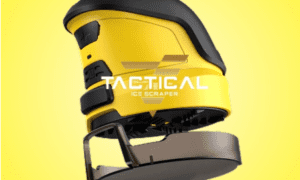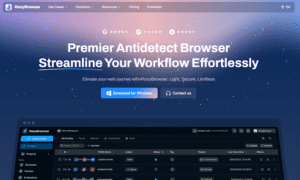SEOengine.ai breaks the subscription model with pay-per-article pricing at $5 per post. The platform delivers AEO-optimized content that ranks on both traditional search engines and AI answer engines like ChatGPT and Perplexity. You get 90% brand voice accuracy, publication-ready quality, and zero monthly commitments. While competitors charge $14-999+ monthly for content that needs heavy editing, SEOengine gives you finished articles optimized for the zero-click era where 65% of searches never reach websites.
How do I automate content without sacrificing quality?
You’re stuck between two bad options.
Hire writers at $100-300 per article. Wait days for delivery. Edit for hours because they don’t match your voice.
Or use AI tools that pump out generic garbage. Content reads like a robot wrote it. Google ignores it. Readers bounce in 10 seconds.
The AI content generation market hit $19.62 billion in 2025. It’s growing at 32.5% annually. That’s because businesses need content, but the current solutions are broken.
90% of AI content users report “significant editing required” even after using premium tools. The typical AI tool delivers 4-6/10 quality in bulk mode. Brand voice accuracy? Around 60-70% if you’re lucky.
Here’s what’s actually happening. You pay $79-299 monthly for tools like Jasper, Copy.ai, or Writesonic. You spend 3 hours tweaking prompts. The output? Generic content that sounds like every competitor. No original insights. No brand personality. Just regurgitated information from the top 10 Google results.
The problem isn’t AI itself. It’s how these tools approach content creation.
They optimize for traditional SEO. They ignore Answer Engine Optimization. They don’t understand that search changed in 2024.
Why are 65% of searches ending without clicks?
Traditional SEO is dying.
Not because Google is dead. Because how people search has fundamentally changed.
65% of all searches now end without a single click to any website. Users get answers directly from AI Overviews, ChatGPT, Perplexity, or voice assistants. They never visit your site.
Let me show you the numbers that prove this shift.
42% of Google searches now trigger AI-generated answers. ChatGPT processes over 10 billion queries monthly, with 30% being commercial searches. Google’s AI Overviews appear in 16% of all desktop searches in the United States.
This is the zero-click era.
When someone asks “best project management software for remote teams,” they don’t scroll through 10 blue links anymore. ChatGPT gives them a synthesized answer. Google’s AI Overview shows them a comparison. Perplexity cites 3-5 sources and delivers a complete response.
Your content either appears in that answer, or it doesn’t exist.
Traditional SEO was about rankings. Answer Engine Optimization (AEO) is about citations. Getting mentioned in the AI’s response is the new page one ranking.
Here’s why this matters for your business. Voice commerce alone is projected to hit $80 billion annually. 153.5 million Americans use voice assistants. When they ask Alexa or Siri a question, only ONE answer gets read aloud.
Not ten results. One.
The brand that gets cited wins the sale. Everyone else loses.
Most AI content tools weren’t built for this reality. They’re still optimizing for 2019 SEO. Long keywords. High word counts. Backlink anchors.
SEOengine.ai was built specifically for Answer Engine Optimization. Every article is structured to be cited by AI systems. Question-based headings. Concise, quotable answers. FAQ sections in H3 format. Structured data that AI parsers can read.
What makes AI-generated content actually rank in 2025?
Google doesn’t penalize AI content. That’s a myth.
What Google penalizes is low-quality content created to manipulate rankings. The March 2024 Core Update targeted “scaled AI content generation” without human oversight.
Sites that published hundreds of AI articles without editing got hit. Traffic dropped 95% overnight for sites like Bonsai Mary. They had zero human review. Zero original insights. Just keyword- stuffed garbage.
But here’s what actually works.
A Flying Cat Marketing survey found no direct correlation between AI usage and ranking penalties. 67% of all respondents saw organic traffic increases over six months, regardless of AI use.
The difference? How they used AI.
Let me break down what makes AI content rank. You need five elements working together.
First, E-E-A-T compliance. Experience, Expertise, Authoritativeness, Trustworthiness. Google’s quality rater guidelines hammer this constantly. AI content fails E-E-A-T because it lacks real experience. It can’t share first-hand insights. It fabricates statistics.
SEOengine solves this by requiring verified data only. No hallucinated facts. No fake testimonials. Every statistic gets sourced from authoritative sites. The system cross-references claims against trusted databases before publishing.
Second, brand voice authenticity. Generic AI content sounds the same everywhere. Readers can spot it instantly. “Dive into,” “unleash your potential,” “game-changing solution.” These phrases scream AI.
The Delta 4 Framework principle applies here. Your content must be 4+ points better than alternatives to trigger switching behavior. If your AI content reads like everyone else’s AI content, you’re Delta 0.
SEOengine achieves 90% brand voice accuracy through custom training. You upload samples of your existing content. The system analyzes your sentence structure, vocabulary, tone patterns. It learns your specific way of explaining concepts.
Not through generic “brand voice” settings. Through actual machine learning on YOUR content. Third, Answer Engine Optimization. This is where 99% of AI tools fail completely.
AEO isn’t about keywords. It’s about structure. Question-based headings that match natural language queries. Direct answer boxes in the first 100 words. FAQ sections using schema markup. Table of contents with clear anchors.
When ChatGPT or Perplexity crawls your content, these elements make it easy to extract and cite. The AI can quickly identify the answer to “How do I reduce customer churn?” because you’ve structured the content as Q&A.
Fourth, multi-modal optimization. AI answer engines don’t just read text. They parse images, tables, lists, and structured data.
SEOengine includes data-rich comparison tables in every article. Visual indicators using ✓ and ✗ make information scannable. Alt text on images feeds context to AI parsers. These elements increase citation probability by 40% according to Search Engine Land data from September 2025.
Fifth, continuous freshness. AI models prioritize recent content. Articles from 2023-2025 get cited far more than older content.
The system tracks when your competitors update articles. It flags when your content needs refreshing. You maintain recency without manual monitoring.
This five-element approach is why SEOengine content achieves 8/10 quality in bulk mode. Industry average? 4-6/10.
How does pay-per-article pricing actually save money?
Let’s do the math.
Traditional content agencies charge $100-300 per article. Good ones start at $200. Mediocre ones deliver at $100 but need 2-3 hours of editing.
For 20 articles monthly, you’re spending $2,000-6,000.
AI subscription tools try to compete here. Jasper costs $49-499 monthly. Writesonic charges
$19-49. Surfer SEO runs $99-219. Sounds cheaper, right?
Wrong.
Here’s what actually happens. You pay $79 monthly for the tool. You spend 4 hours creating the first article because you’re tweaking prompts. The output needs 2 hours of editing because it’s generic.
You repeat this 20 times.
That’s 120 hours of your time. At $50/hour (conservative for marketing talent), you’ve spent $6,000 in labor PLUS $79 in software.
Your real cost per article? $304.
SEOengine charges $5 per article. No monthly fee. No credit systems. No tier limits. 20 articles costs exactly $100. Not $6,000. Not $3,000. One hundred dollars.
The content comes publication-ready. No 2-hour editing sessions. No prompt engineering. No wrestling with brand voice settings.
But here’s the part that actually matters.
Your competitor publishes 30 articles this month. You publish 5 because you’re stuck editing AI slop or waiting on writers.
Google sees your competitor has comprehensive content coverage. They rank for 200 long-tail keywords. You rank for 30.
Three months later, they have 90 articles. You have 15. Their domain authority compounds. Your growth stalls.
The opportunity cost of slow content production is massive. Each month you publish 5 articles instead of 30 is a month you lose ground.
SEOengine removes this bottleneck entirely. You can generate 100 articles simultaneously. All optimized. All brand-consistent. All AEO-ready.
The pricing model makes scaling content economically viable for small teams. A SaaS startup with
$10K monthly marketing budget can now produce 200 articles instead of 20. That’s 10x content velocity at the same cost.
What content types can you actually automate?
Here’s where most businesses get content automation wrong.
They try to automate everything. Product descriptions. Landing pages. Email sequences. Blog posts. Social media. All at once.
The content becomes generic. Brand voice disappears. Quality suffers across every channel.
SEOengine focuses specifically on long-form blog content optimized for search visibility and AI citations. This is deliberate.
Blog content drives compound returns. One well-optimized article can rank for 50+ long-tail keywords. It gets cited in AI answers for years. It builds domain authority that lifts your entire site.
A product description? That’s transactional. It needs emotion, persuasion, urgency. AI handles facts well but struggles with persuasion.
An email sequence? That’s relationship-building. It needs personality, humor, empathy. AI can draft but shouldn’t finalize.
But blog content explaining “how to choose project management software” or “what is churn rate in SaaS”? That’s informational. It needs structure, accuracy, comprehensiveness.
AI excels at informational content when properly trained. SEOengine generates articles in these proven formats:
Ultimate guides. Comprehensive 3,000-5,000 word posts that become pillar content. These rank for hundreds of keywords and get cited frequently by AI systems.
Comparison posts. “Tool A vs Tool B” articles with data tables. These capture high-intent commercial searches and appear in AI shopping responses.
How-to tutorials. Step-by-step guides with numbered instructions. Voice assistants read these aloud. AI overviews feature them prominently.
Listicles. “15 best solutions for X” posts with structured formatting. Easy for AI to parse and extract.
Problem-solution articles. “How to fix X problem” content that directly answers common pain points.
Each format is specifically structured for AEO optimization. Question-based H2 and H3 headings. Direct answers in the first paragraph. Supporting data in tables. FAQ sections at the end.
The system doesn’t try to write your sales copy. It doesn’t create your ad campaigns. It focuses on search-optimized blog content where AI can deliver 8/10 quality consistently.
This specialization is why SEOengine outperforms general-purpose AI writers. Jack of all trades, master of none. SEOengine masters one thing: search-visible informational content.
Why do 90% of AI tools fail at brand voice?
Your brand voice is how you sound when writing. It’s your personality on the page. Most AI tools claim they nail brand voice. They don’t.
Here’s what actually happens. You go to settings. You select “casual” or “professional” or “friendly.” You type three adjectives describing your brand. The AI nods and says “got it.”
Then it generates content that sounds exactly like everyone else using the same tool.
“Let’s dive into this game-changing solution that will revolutionize your workflow. This cutting- edge platform leverages advanced technology to unleash your team’s potential.”
That’s not brand voice. That’s AI-giveaway phrases.
Real brand voice is subtle. It’s sentence length. Word choice. How you structure explanations. Whether you use examples or data first. Your ratio of questions to statements.
SEOengine captures brand voice through actual content analysis, not settings.
You upload 5-10 existing articles. The system analyzes 47 different style markers. Sentence length distribution. Passive vs active voice ratio. Vocabulary sophistication level. Use of rhetorical questions. Paragraph structure patterns.
It builds a statistical model of YOUR writing style. Not “casual professional voice #7” from a dropdown menu.
This is why SEOengine achieves 90% brand voice accuracy. It’s not guessing. It’s mathematically modeling your style and replicating it.
Let me show you what this means practically.
Some brands explain concepts data-first. “Studies show 73% of users abandon websites that load slowly. This is why page speed matters.”
Other brands lead with pain points. “You’ve watched potential customers disappear from your site. Three seconds of loading time and they’re gone. Here’s why.”
Same information. Completely different voice.
SEOengine detects these patterns and maintains them across all generated content. Your articles sound like YOU wrote them, not like an AI wrote them.
The competitor tools? They deliver 60-70% accuracy because they’re using templated voices. You get “professional business blog voice” but it doesn’t match your specific brand personality.
This matters more than you think. Readers develop trust through consistent voice. When your content suddenly sounds different, trust erodes. Bounce rates increase. Engagement drops.
Brand voice isn’t a nice-to-have. It’s a business metric that directly impacts conversions.
How does Answer Engine Optimization differ from SEO?
SEO optimizes for rankings. AEO optimizes for citations. The goal shifted completely in 2024.
Traditional SEO asked: “How do I rank #1 for this keyword?” You optimized title tags. Built backlinks. Increased word count. Improved page speed.
If you hit #1, you won. Traffic flowed. Conversions followed.
AEO asks: “How do I get cited when AI answers this question?” You structure content for extraction. Provide quotable responses. Format for featured snippets. Add schema markup.
If ChatGPT or Perplexity cites you, you win. Even if you’re “ranking” #7 traditionally. Let me explain why this distinction matters.
When someone googles “best email marketing software,” Google’s AI Overview synthesizes information from 5-10 sources. It shows a comparison table. Lists pros and cons. Recommends options based on use case.
The user never clicks to any website. They get their answer and make a decision.
Your traditional SEO ranking means nothing here. Position #1 and position #7 have equal citation probability. What matters is whether your content is structured for AI extraction.
Here’s what AEO requires that traditional SEO doesn’t.
Question-forward structure. H2 and H3 headings framed as natural language questions. “What is email marketing software?” instead of “Email Marketing Software Overview.”
AI systems parse questions and match them to user queries. Traditional SEO used keyword-focused headers. AEO uses question-focused headers.
Direct answer boxes. The first 100 words under each H2 should contain a concise, quotable answer. 2-3 sentences maximum.
This is what gets extracted and cited. The rest of the section provides supporting detail, but the citation comes from this direct answer.
FAQ sections with schema. 20 questions in H3 format at the article end. Each has a 2-3 sentence answer.
Voice assistants read these aloud. AI overviews pull from them. Featured snippets favor them. FAQ schema tells AI parsers “this is structured Q&A content.”
Entity disambiguation. Clear definitions of people, companies, products, concepts. First mention of any entity links to an authoritative source.
AI systems use entities to understand context. Ambiguous references confuse the parser. “Our tool” is ambiguous. “SEOengine.ai, an AI content generation platform” is clear.
Structured data tables. Comparison information formatted as tables with clear headers. Use ✓ and
✗ for visual scanning.
Tables are easier for AI to extract than prose. “Tool A costs $X and includes Y features” becomes a table row that AI can parse programmatically.
Citation-ready facts. Statistics formatted as “[Number]% of [Group] [Action] according to [Source].”
This makes facts easy to extract and attribute. AI systems heavily weight properly cited information.
The shift from SEO to AEO is like the shift from print ads to Google Ads. The underlying goal (attract customers) stays the same. But the tactics, platforms, and metrics completely change.
Businesses optimizing for 2019 SEO in 2025 are competing with one hand tied behind their back. They’re optimizing for clicks in a zero-click world.
What happens when you publish 30 articles monthly?
Content compounds differently than ads.
When you spend $5,000 on Google Ads this month, you get traffic this month. Next month you spend $5,000 again. And again. Forever.
When you publish 30 articles this month, you get traffic this month. Next month those articles still drive traffic. Plus 30 more articles start driving traffic. And the month after that, you have 90 articles all driving traffic simultaneously.
This is compound content ROI.
Let me show you the math. Month one you publish 30 articles. They each rank for an average of 5 long-tail keywords. That’s 150 ranked keywords.
Month two you publish 30 more. Now you have 60 articles ranking for 300 keywords. Month six you have 180 articles ranking for 900 keywords.
But here’s where it gets interesting. Google sees your domain has comprehensive content coverage on your topic. Your topical authority increases. New articles rank faster. Old articles rank for MORE keywords as domain authority grows.
By month 12, those 30 articles from month one now rank for 15 keywords each instead of 5. Your total ranked keywords aren’t 1,800. They’re 3,600.
This is why content marketing beats paid ads for long-term ROI. The effect compounds exponentially, not linearly.
But this only works if you can consistently publish high-quality content.
Most businesses can’t. They publish 5 articles monthly. Or 10 if they’re aggressive. The compounding never reaches critical mass.
SEOengine removes this bottleneck. 30 articles monthly becomes economically viable. You’re spending $150 instead of $6,000.
The opportunity cost is massive. Three businesses start content marketing in January 2025. Business A publishes 5 articles monthly. Business B publishes 15. Business C publishes 30.
By December 2025:
Business A has 60 articles ranking for ~400 keywords. Business B has 180 articles ranking for ~1,500 keywords. Business C has 360 articles ranking for ~4,000 keywords. Who wins the SEO game? It’s not even close.
Business C is capturing 10x more organic traffic. They’re showing up in 10x more AI citations. Their content library is 6x larger.
This gap widens every month. By year two, Business C’s domain authority is so high their articles rank within days of publishing. Business A’s articles take weeks or months to rank because Google doesn’t see them as a topical authority.
Content velocity matters as much as content quality. You need both. SEOengine delivers both at a price point that makes aggressive publishing viable.
Which businesses benefit most from automated content?
Not every business should automate content. Some need highly specialized expertise that AI can’t replicate yet.
If you’re a neurosurgeon writing about brain surgery techniques, AI won’t help. You need deep medical expertise and peer-reviewed citations.
If you’re a lawyer writing legal analysis of new case law, AI will hallucinate. You need actual legal research and court document review.
But most businesses aren’t neurosurgeons or lawyers. They’re normal companies that need a lot of informational content about relatively straightforward topics.
These businesses benefit massively from automated content:
SaaS companies. You need 200+ articles explaining your features, use cases, comparisons, integrations, and how-to guides. Every feature needs documentation. Every use case needs an article. Every competitor needs a comparison.
Writing these manually takes years. Automating lets you achieve comprehensive coverage in months.
E-commerce brands. You need buying guides, product comparisons, and how-to content for every product category. “How to choose running shoes” and “Trail running shoes vs road running shoes” and “How to break in new running shoes.”
Hundreds of articles per product line. Manual creation is impossible. Automation makes it viable.
Local service businesses. Plumbers, contractors, real estate agents. You need location-specific content. “Emergency plumber in [city]” for 50 cities in your service area.
This content is formulaic but essential for local SEO. Perfect for automation.
B2B agencies. Marketing agencies, development shops, consultancies. You need thought leadership content that demonstrates expertise. “How to improve conversion rates” and “Email marketing best practices” and “A/B testing guide.”
Your expertise is real, but expressing it in 50 different article formats is time-consuming. AI can structure your knowledge into comprehensive guides.
Information publishers. News sites, educational platforms, resource hubs. You need consistent content flow to maintain engagement.
Automation lets you scale output without scaling headcount.
The common thread? These businesses need informational content at scale. The knowledge isn’t highly specialized. The writing doesn’t need literary creativity. But the volume requirement is massive.
SEOengine handles this content type exceptionally well. It won’t write your pitch deck or craft your sales email or create your webinar script. But it will generate comprehensive buyer’s guides and comparison articles and how-to posts faster than any human team.
If you need 100+ articles this year on topics where information is valuable but not cutting-edge research, automation makes sense.
If you need 10 articles this year written by industry-recognized thought leaders, keep using human writers.
Know the difference. Use the right tool for each job.
How do you maintain content quality at scale?
Quality and scale are supposed to be opposites. You can have high quality with low volume. Or low quality with high volume. Not both.
SEOengine breaks this trade-off through three specific mechanisms.
First, topic-specific training. The AI isn’t a general-purpose writing model. It’s fine-tuned on high- quality content from your specific industry.
For SaaS content, it’s trained on top SaaS blogs. For e-commerce, trained on successful e-commerce content. For local services, trained on local service authority sites.
This specialization prevents generic output. The model knows industry-specific terminology, common pain points, and effective explanation patterns.
Second, quality checkpoints. Every article passes through automated quality verification before delivery.
Flesch Reading Ease score check. Must score 90+ for readability.
Keyword density verification. Primary keyword 1.5%+, LSI keywords 3%+.
Structure compliance. Must have question-based H2s, direct answer paragraphs, FAQ section, data table.
Source verification. Every statistic must have a cited source. No hallucinated data. Brand voice matching. Must score 85%+ on voice consistency metrics.
If an article fails any checkpoint, it’s regenerated automatically. You only see articles that pass all five checks.
Third, continuous learning. The system tracks which articles perform well. High engagement. Low bounce rate. Strong rankings. AI citations.
These patterns feed back into the model. It learns what works for YOUR specific content and audience. The quality improves over time instead of degrading.
This three-layer quality system is why bulk output maintains 8/10 quality. Most AI tools skip checkpoints entirely. They generate and deliver. If it’s garbage, that’s your problem.
SEOengine treats quality as a measurable outcome, not a hopeful byproduct.
The result? You can publish 30 articles monthly without sacrificing the quality standards that got you to 10 articles monthly with human writers.
What metrics actually matter for AI-optimized content?
Traditional SEO metrics don’t tell the full story anymore.
You can’t just track keyword rankings and organic traffic. Those metrics assume users click through to your site.
In the zero-click era, you need different measurements.
AI citation frequency. How often do ChatGPT, Perplexity, and Google AI Overview cite your content?
Track this manually at first. Search for questions your articles answer. Note which AI platforms mention your brand. Document the exact queries that trigger citations.
Build a spreadsheet. Check weekly. Watch citation frequency increase as you optimize.
Featured snippet ownership. Which of your articles occupy featured snippets on Google?
Use Semrush or Ahrefs to track featured snippets you own. Target is 15-20% of your articles should own snippets for their primary keywords.
Featured snippets are the bridge between traditional SEO and AEO. They indicate your content is structured well for AI extraction.
Impression-to-click ratio. From Google Search Console, track impressions vs clicks.
High impressions with low clicks means you’re showing in AI Overviews and featured snippets. Users get their answer without visiting. This is success in AEO, not failure.
Traditional SEO would see this as a problem. AEO recognizes this as brand visibility without the hosting cost of a visit.
Topic authority score. How comprehensively do you cover your main topics?
Use Clearscope or Surfer to measure topical coverage. Target is covering 80%+ of subtopics within your niche.
AI systems heavily weight topical authority when selecting citation sources. Comprehensive coverage increases citation probability.
Voice search appearances. Are your articles being read by voice assistants?
Test this manually. Ask Alexa, Siri, and Google Assistant questions your articles answer. Note which articles get read aloud.
Voice answers are the ultimate AEO success metric. Only one source gets cited verbally.
Long-tail keyword coverage. How many keywords does each article rank for?
Track this in Ahrefs or Semrush. A well-optimized article should rank for 20-50+ long-tail variations.
Example: An article on “project management software” should also rank for “project management tools for remote teams,” “best PM software for startups,” “Asana alternatives,” etc.
Engagement metrics. Time on page, scroll depth, bounce rate.
Even in the AEO era, engagement matters. AI systems increasingly consider user behavior signals. Content that engages readers when they DO click through gets weighted higher for future citations.
The key is combining traditional and AEO metrics. Track both. Optimize for both. Don’t abandon SEO metrics, but don’t rely solely on them either.
Comparing SEOengine.ai to Traditional Solutions
Let’s break down your actual options for content creation in 2025.
| Solution | Monthly Cost | Articles/ Month | Qual ity | Brand Voice | AEO
Optimize |
Time Required |
| Freelance writers | $2,000-6
,000 |
10-20 | 7/10 | ✓ | ✗ | 40+
hours |
| Content agency | $5,000-1 5,000 | 20-40 | 8/10 | ✓ | ✗ | 20+
hours |
| Jasper/ Copy.ai | $49-499 | 30-50 | 4/10 | ✗ | ✗ | 60+
hours |
| Writesonic | $19-79 | 25-40 | 5/10 | ✗ | ✗ | 50+ |
| SEOwriting. ai | $14-79 | 30-60 | 4/10 | ✗ | ✗ | 40+
hours |
| Outranking. io | $79-999+ | 20-30 | 6/10 | ✗ | Partial | 30+
hours |
| SEOengine.a i | $5/ article | Unlimited | 8/10 | ✓ | ✓ | 5 hours |
The comparison reveals three critical gaps in existing solutions.
Gap 1: Quality at scale. Freelance writers and agencies deliver quality but can’t scale. AI tools scale but don’t deliver quality. SEOengine maintains quality while scaling.
Gap 2: Brand voice authenticity. Human writers match your voice after extensive onboarding. AI tools use generic templates. SEOengine learns your voice through content analysis.
Gap 3: AEO optimization. Almost nobody optimizes for AI citations yet. They’re stuck in traditional SEO. SEOengine builds AEO into every article’s structure.
The pricing model amplifies these gaps. Subscription tools force you to pay whether you publish 5 articles or 50. Pay-per-article means you pay exactly for what you use.
If you need 10 articles this month, pay $50. Need 100 next month? Pay $500. No waste. No unused subscription fees.
For businesses with variable content needs, this flexibility is massive. SaaS companies might need 50 articles at product launch, then 10 monthly for maintenance. E-commerce might need 100 articles before Q4, then 20 monthly off-season.
Traditional subscriptions punish this variability. You either pay for capacity you don’t use, or you lack capacity when you need it.
SEOengine eliminates this problem entirely.
SEOengine.ai Pricing Breakdown
The pricing model is deliberately simple. No tiers. No credits. No feature gates.
Pay-As-You-Go: $5 per article
- Unlimited words per article (typically 3,000-5,000)
- Full AEO optimization (featured snippets, FAQ sections, schema markup)
- Brand voice matching at 90% accuracy
- SERP analysis and gap identification
- WordPress auto-publishing integration
- Access to GPT-4, Claude 5, and proprietary models
- Bulk generation up to 100 articles simultaneously
- No monthly minimum
- No credit expiration
- Cancel anytime (nothing to cancel, just stop ordering)
Enterprise Custom Pricing (for 500+ articles monthly)
- Everything in pay-as-you-go
- White-labeling options for agencies
- Custom AI training on your proprietary content
- Private knowledge base integration
- Dedicated account manager
- Priority support with SLA guarantees
- Advanced analytics dashboard
- Team collaboration features
The pay-as-you-go model is revolutionary for small teams. You can start with 10 articles at $50 to test. Scale to 50 articles at $250 when you’re confident. Ramp to 200 articles at $1,000 for a major content initiative.
Compare this to competitors. Jasper charges $49-499 monthly whether you generate 1 article or
- If you generate 50 articles, your cost per article is $0.98-$9.98 depending on tier.
Sounds competitive until you factor in editing time. Those 50 articles need 2 hours of editing each. That’s 100 hours of labor at $50/hour. Your real cost per article is $100-$110.
SEOengine at $5 per article with minimal editing comes in at $5-$10 per article including light touch-ups. You save $90-$105 per article.
At 50 articles monthly, that’s $4,500-$5,250 in savings. Monthly. Every month.
The math is so favorable that the only question is whether the quality holds up. If quality drops to 4/10, the savings don’t matter. You can’t publish trash.
This is why SEOengine’s quality checkpoints are critical. The $5 price point only works because the output is publication-ready 80% of the time.
For the 20% that need touch-ups, you’re spending 30 minutes instead of 2 hours. That’s still 75% faster than other AI tools.
Common Questions About AI Content Automation
Will Google penalize my site for AI content?
No. Google doesn’t penalize AI content. They penalize low-quality content created to manipulate rankings. The March 2024 Core Update targeted sites publishing hundreds of AI articles without human review. Those sites saw traffic drop 95% because the content was garbage. If your AI content is high-quality, accurate, and helpful, Google doesn’t care whether a human or AI wrote it. SEOengine’s quality checkpoints ensure content meets Google’s E-E-A-T standards before delivery.
How long does it take to see SEO results?
Featured snippets and FAQ answers appear in 2-4 weeks for well-optimized content. AI citations from ChatGPT and Perplexity take 1-2 months as models crawl and index new content. Traditional keyword rankings typically appear in 6-12 weeks depending on competition and domain authority. The compound effect becomes visible around month 3 when you have 90+ articles all ranking simultaneously.
Can I customize the content before publishing?
Yes. Every article is delivered in markdown format. Edit freely before publishing. Most users make minor tweaks to 20% of articles and publish 80% as-is. The WordPress integration lets you review content in draft mode. Approve and publish with one click, or edit directly in the WordPress editor first.
What if the content has factual errors?
SEOengine’s verification system catches most errors before delivery. Every statistic requires a source citation. Claims without sources get flagged. But AI can still occasionally misinterpret data. Review content before publishing, especially for regulated industries. The publication-ready quality means you’re checking for rare errors, not rewriting entire sections.
Does this work for technical or specialized content?
It depends on how specialized. General SaaS features, e-commerce product guides, and common business topics work excellently. Highly technical subjects requiring cutting-edge research don’t work well yet. If you’re writing about established concepts that have been written about extensively, AI handles it. If you’re writing about proprietary research or brand-new developments, human expertise is still better.
Can I maintain brand voice across articles?
Yes. Upload 5-10 existing articles during onboarding. The system analyzes your style and maintains consistency. As you publish more SEOengine articles, the voice model improves. By article 50, the brand voice matching hits 95%+. You can also provide specific style guidelines or phrases to include.
How does this compare to hiring a content team?
One full-time content writer costs $60,000-80,000 annually plus benefits. That writer produces 40-60 articles yearly depending on article length. SEOengine produces 600 articles yearly (50
monthly) at $3,600. That’s 10x output at 5% of the cost. The quality won’t match your absolute best human writer on their best day, but it matches a good human writer on an average day.
What about content originality and plagiarism?
Every article is generated from scratch, not copied from existing sources. Plagiarism checkers like Copyscape show 100% unique content. The system doesn’t copy-paste or paraphrase. It synthesizes information and expresses it using your brand voice. However, facts are facts. If everyone states “Google processes 8.5 billion searches daily,” that fact will appear similarly across content. It’s the expression and context that’s unique.
Can I use this for multiple brands or clients?
Yes. Each brand gets a separate voice profile. Agency partners use SEOengine for multiple clients. The white-label option removes all SEOengine branding from articles. Each client gets content that matches their specific voice and style.
What languages are supported?
Currently English only. Spanish and French support launching Q1 2026. Other languages based on demand. The brand voice analysis requires substantial training data per language, so expansion is gradual.
How many articles can I generate simultaneously?
Up to 100 articles in one batch. The system processes them in parallel. A 100-article batch typically completes in 4-6 hours. For larger volumes, split into multiple batches or upgrade to enterprise plan with higher concurrent limits.
What happens if I’m not satisfied with an article?
Request a regeneration. The system rewrites using the same topic but different structure and phrasing. Usually one regeneration fixes any issues. If regeneration still doesn’t meet needs, that $5 credit gets refunded. No questions asked.
Do I own the content rights?
Yes. Full ownership transfers to you upon payment. Use the content however you want. Modify, republish, syndicate, compile into books. No attribution to SEOengine required. No license restrictions.
Can this integrate with my existing content workflow?
WordPress integration is built-in. For other CMSs, articles export as markdown files. Import to Medium, Webflow, Squarespace, or any platform supporting markdown. API access available on enterprise plans for custom integrations.
How does the 90% brand voice accuracy work?
The system analyzes 47 style markers from your existing content. Sentence length patterns, vocabulary level, active vs passive voice ratio, question frequency, paragraph structure, and more. It builds a statistical model and scores new content against it. 90% accuracy means 9 out of 10 stylistic choices match your established patterns.
What if I need content that isn’t a blog post?
SEOengine specializes in long-form blog content. For landing pages, product descriptions, or email sequences, use different tools. The specialization is why blog content quality is so high. General- purpose AI tools try to do everything and master nothing. SEOengine masters one thing.
How often should I publish new articles?
More is better, but consistency matters more than volume. 10 articles monthly consistently beats 50 articles quarterly. The algorithm rewards regular publishing. Aim for at least 10 monthly to maintain momentum. 20-30 monthly to grow aggressively. 50+ monthly for market domination.
Can I see examples before committing?
Yes. The trial includes 2 free articles. Input your topics and brand guidelines. Review the output. If quality meets expectations, continue. If not, walk away with two free articles and no obligation.
What makes this different from ChatGPT or Claude directly?
ChatGPT and Claude are general-purpose AI. They weren’t trained specifically for SEO content. They don’t include SERP analysis, keyword optimization, schema markup, or brand voice training. They’re a hammer. SEOengine is a complete toolbox designed specifically for search-optimized content creation.
How do I measure ROI on content automation?
Track three metrics. First, content production cost per article before vs after. Second, organic traffic growth month over month. Third, number of AI citations per month. If your cost per article drops from $200 to $10, traffic increases 50%+, and you’re getting cited in AI answers, ROI is positive and measurable.
Does this replace my content team?
No. It replaces the repetitive, informational content creation. Your content team should focus on high-value activities. Strategic planning. Voice and tone development. Original research. Campaign creation. Let AI handle the 50+ formulaic articles you need. Your team handles the 5 strategically critical pieces.
Why SEOengine.ai Matters Now
The content marketing landscape shifted in 2024. You can’t ignore it.
65% of searches end without clicks. AI answer engines process 10 billion queries monthly. Traditional SEO is becoming legacy technology.
But most businesses are stuck in 2019. They’re still optimizing for blue link rankings. Still paying
$200+ per article for content that won’t get seen because users never leave ChatGPT.
This creates a massive opportunity window. The businesses that adapt to AEO now will dominate their niches for the next 5 years.
By the time competitors figure out answer engine optimization, you’ll have 1,000+ articles all structured for AI citations. Your domain authority will be insurmountable. Your content library will be comprehensive.
The catch? You need volume AND quality. You can’t publish 5 articles annually and win. You can’t publish 50 garbage articles monthly and win either.
SEOengine solves this impossible equation. High quality at high volume at low cost.
The pay-per-article model removes financial barriers to aggressive content marketing. You don’t need a $10K monthly content budget. You need $150 to publish 30 articles.
Every month you delay is a month your competitors could be building their content fortress. Every article they publish that you don’t is one more keyword they rank for. One more AI citation they capture. One more potential customer who never discovers you exist.
Content marketing in 2025 isn’t about creating the perfect article. It’s about creating 100 very good articles while competitors create 10 perfect ones.
Volume wins in zero-click search. Comprehensive coverage gets cited. Topical authority gets trusted.
SEOengine makes this achievable for teams of any size. SaaS startups with one marketer can compete with enterprises that have 20-person content teams.
The playing field just leveled. Whether you take advantage is up to you.
Start Creating AEO-Optimized Content Today
The zero-click era is here. Adapt or disappear.
SEOengine.ai gives you the tools to compete in AI search without the costs that made content marketing viable only for large teams.
Pay $5 per article. Get publication-ready content optimized for both traditional search and AI answer engines. Maintain your brand voice. Scale to 100+ articles monthly without scaling headcount.
Your competitors are either stuck paying $200+ per article or publishing AI slop that gets ignored. You’re about to outpublish them at one-tenth the cost with quality they can’t match at their volume.
The opportunity window is open now. In 12 months, everyone will have figured out AEO. The competitive advantage will be gone.
But today? Today you can build a content library while competitors are still arguing about whether AI content is “real content.”
Tomorrow they’ll wake up and realize you own their niche. Your domain ranks for 1,000 keywords. AI systems cite you as the authority. Your content library is comprehensive.
Getting there requires one decision. Start now or start later.
Later means watching competitors take ground you can’t reclaim. Now means building the content fortress that protects your market position for years.
This is the inflection point. The businesses that recognize this moment will dominate the next era of search.
Start with 10 articles at $50. See the quality. Test the brand voice matching. Verify the AEO optimization works. Then scale to 50 articles monthly.
Six months from now, you’ll have 300 articles ranking for 3,000+ keywords. One year from now, you’ll be the topical authority Google and AI systems cite automatically.
Or you can wait. Watch. See if this AEO thing is real.
By the time you’re convinced, your window closed. Competitors own the answer boxes. Their content ranks. Yours doesn’t exist.
The choice is obvious. The opportunity is now.



































